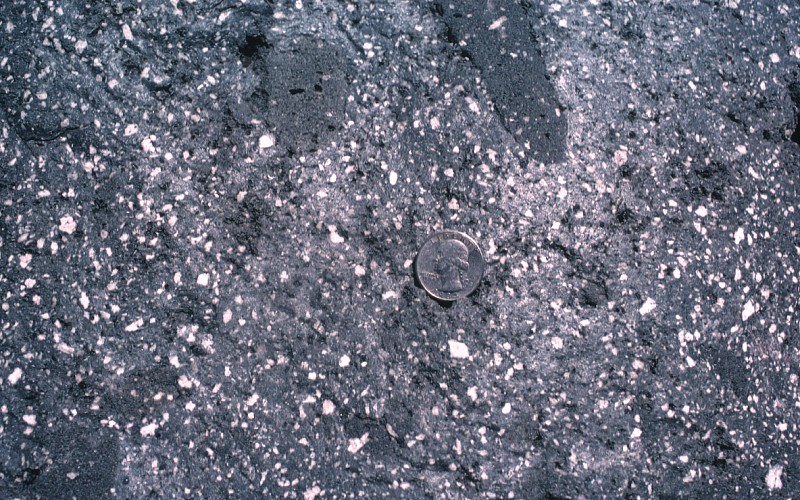- dacite
- ALASKA VOLCANO OBSERVATORY GLOSSARY
Volcanic rock (or lava) that characteristically is light in color and contains 62% to 69% silica and moderate a mounts of sodium and potassium.\GLOSSARY OF VOLCANIC TERMSA generally light-colored, relatively silica rich (65% to 68 % SiO2) volcanic rock (extrusive equivalent of a quartz diorite or a tonalite). Dacitic magmas have a relatively high viscosity, and their associated volcanic eruptions may produce thick, muffin-shaped lava flows (lava domes) or, commonly, may be explosive and produce abundant tephra resulting in ash falls, ash flows, and surges. Dacites typically contain intermediate plagioclase (andesine or oligoclase) and quartz (>10%) with pyroxene and/or hornblende with minor biotite and/or sanadine (volcanic K-feldspar).\USGS PHOTO GLOSSARY OF VOLCANIC TERMSDacite lava is most often light gray, but can be dark gray to black. Dacite lava consists of about 63 to 68 percent silica (SiO2). Common minerals include plagioclase feldspar, pyroxene, and amphibole. Dacite generally erupts at temperatures between 800 and 1000 °C. It is one of the most common rock types associated with enormous Plinian-style eruptions. When relatively gas-poor dacite erupts onto a volcano's surface, it typically forms thick rounded lava flow in the shape of a dome.\
 Close view of dacite lava from the May 1915 eruption of Lassen Peak, California\Did you know?• Even though it contains less silica than rhyolite, dacite can be even more viscous (resistant to flow) and just as dangerous as rhyolites. These characteristics are a result of the high crystal content of many dacites, within a relatively high-silica melt matrix. Dacite was erupted from Mount St. Helens 1980-86, Mount Pinatubo in 1991, and Mount Unzen 1991-1996.• The word dacite comes from Dacia, a Roman province found between the Danube River and Carpathian Mountains, where the rock was first described.
Close view of dacite lava from the May 1915 eruption of Lassen Peak, California\Did you know?• Even though it contains less silica than rhyolite, dacite can be even more viscous (resistant to flow) and just as dangerous as rhyolites. These characteristics are a result of the high crystal content of many dacites, within a relatively high-silica melt matrix. Dacite was erupted from Mount St. Helens 1980-86, Mount Pinatubo in 1991, and Mount Unzen 1991-1996.• The word dacite comes from Dacia, a Roman province found between the Danube River and Carpathian Mountains, where the rock was first described.
Glossary of volcanic terms. - University of Wisconsin Oshkosh. G. J. Hudak. 2001.
